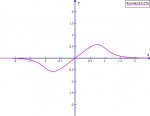Where do I begin with this one?
Evaluate \(\displaystyle \int _{-2}^{2} \frac{sinx}{1 + x^6}dx\)
I'm not sure where to begin, as I can't think of an antiderivitive to plug in the lower and upper bounds....
We haven't been on integration long, and the professor is not the best teacher.
John
Evaluate \(\displaystyle \int _{-2}^{2} \frac{sinx}{1 + x^6}dx\)
I'm not sure where to begin, as I can't think of an antiderivitive to plug in the lower and upper bounds....
We haven't been on integration long, and the professor is not the best teacher.
John


